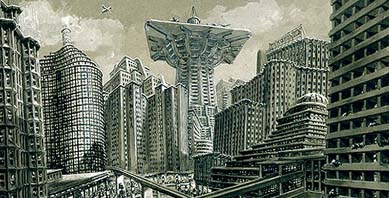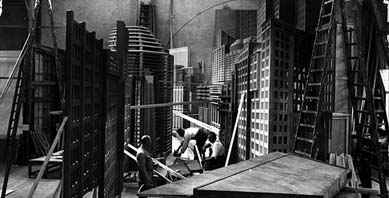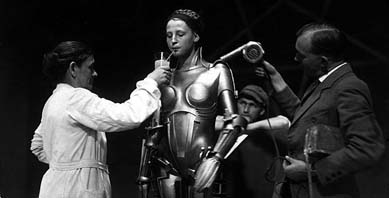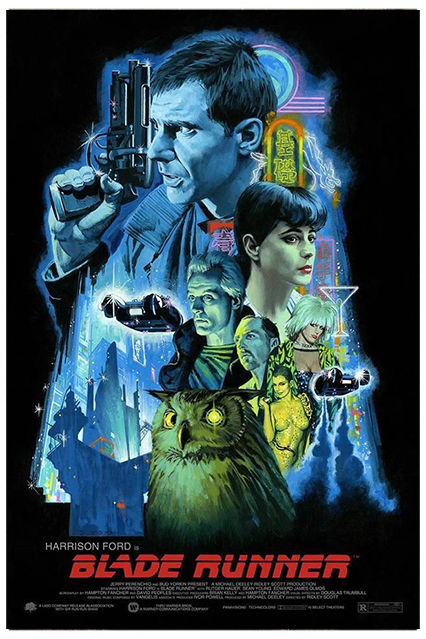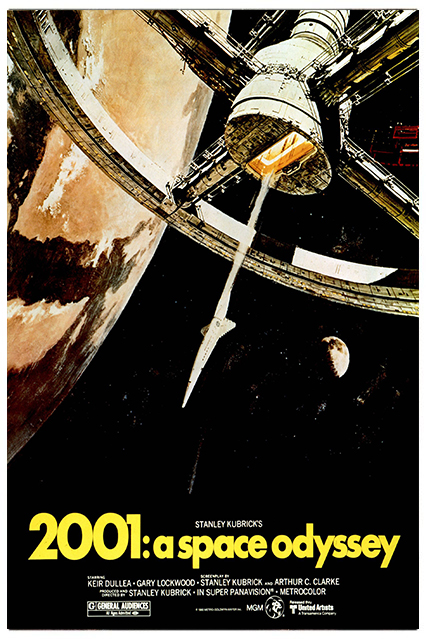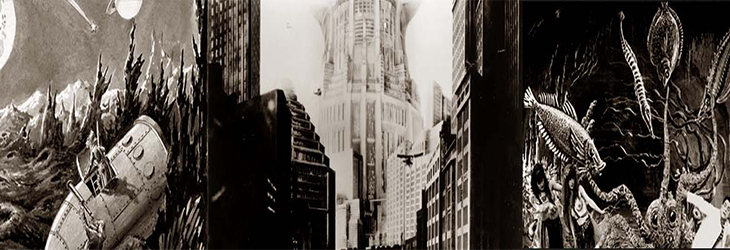
Essential Films in the Evolution of Science Fiction Cinema
By Melody Hayward in ENTERTAINMENT
The Science Fiction film genre is responsible for some of the most iconic and memorable scenes in cinematic history. From the glorious visual eye candy of imaginative starscapes to mankind’s epic struggles across distant galaxies, the evolution of science fiction cinema has brought audiences a feast of new and imaginative experiences. Modern Science Fiction cinema now merges with every other genre of film.
Today it is common to see space-crime, space-cowboys, space-war, and even space-romance. Of course, Science Fiction is not always about space, but that is the point. Science Fiction is everywhere in modern film, but how did we get here? The answer is simple, cinema evolves. And to illustrate, I have selected a few influential sci-fi movies that every sci-fi movie buff should see.
A Trip to the Moon, 1902
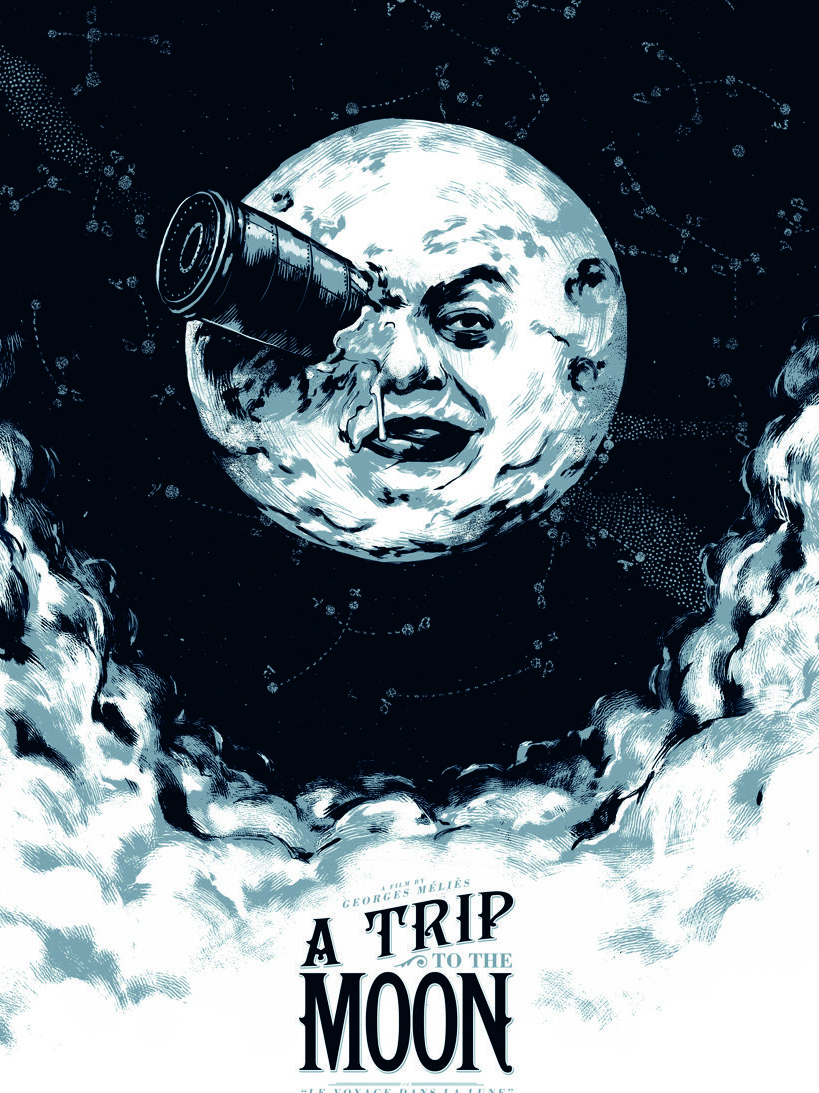
Georges Méliès’s captivating short film brought the world of science fiction and adventure to the big screen. Originally released in France as Le Voyage dans la Lune, A Trip to the Moon is commonly considered to be the very first Science Fiction film. The film was inspired by the novels of Jules Verne.
Surfacing right at the dawn of cinema, the film follows a group of scientists and explorers who travel to Earth’s satellite on a fact-finding mission. Upon arriving on the Moon, they discover hostile aliens! A battle ensues and our brave explorers narrowly escape back to Earth.
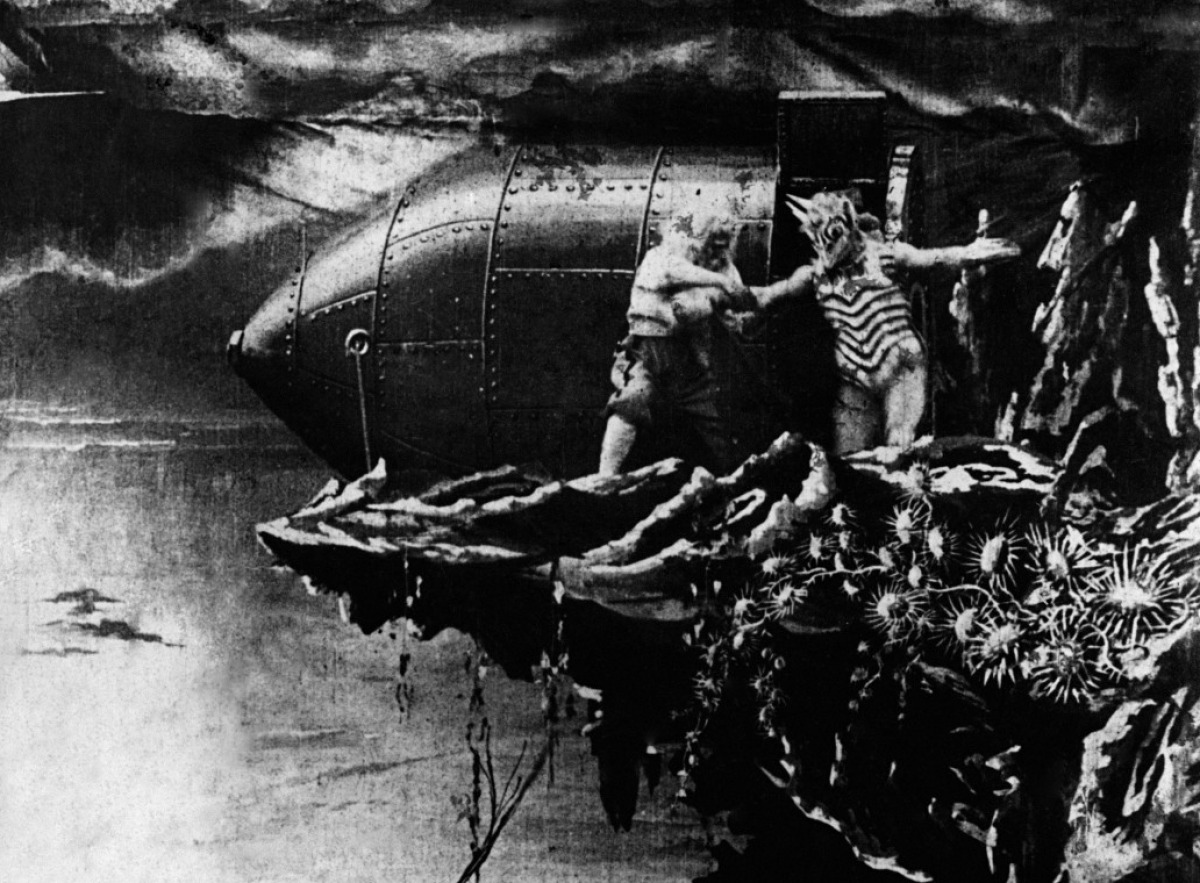
Méliès himself performs as the leading Professor, determined to discover more about the moon and its workings. A huge international success at the time, the short film proved the value of the science-fiction cinema. The film was so popular it was extensively pirated. In 1993 an original print was discovered and restored for video release in 2011.
This 1902 film is frequently available for viewing on Amazon Prime and Netflix! While its importance to the history of science fiction film is undeniable, it’s also considered to be one of the 100 greatest films of the 20th century across all genres. A Trip to the Moon is truly one of the most influential films of all time.
20,000 Leagues Under the Sea, 1916
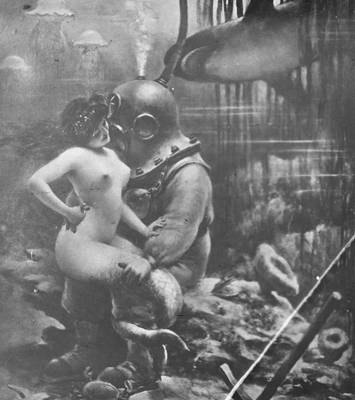
Another hugely influential silent science fiction film is 20,000 Leagues Under the Sea. The film is another dramatization of a Jules Verne novel.
American director Stuart Paton showcases a comic-book style adventure story with strong sci-fi elements, including monstrous sea-creatures and powerful sub-aquatic technology.
The film took a few major steps forward with regard to special effects. 20,000 Leagues Under the Sea was one of the first movies with scenes shot underwater.
The production team spared no cost when it came to special effects and strived to make every scene as realistic as possible.
The film centered around the submarine the Nautilus, and the film’s special effects team went so far as to make a life-size model of the ship.
Though the story and film have been remade many times with better effects, when viewed in order of release it is clear that modern remakes rely heavily on the foundations of the 1916 original and simply improve on the groundbreaking effects pioneered by the original filmmakers.
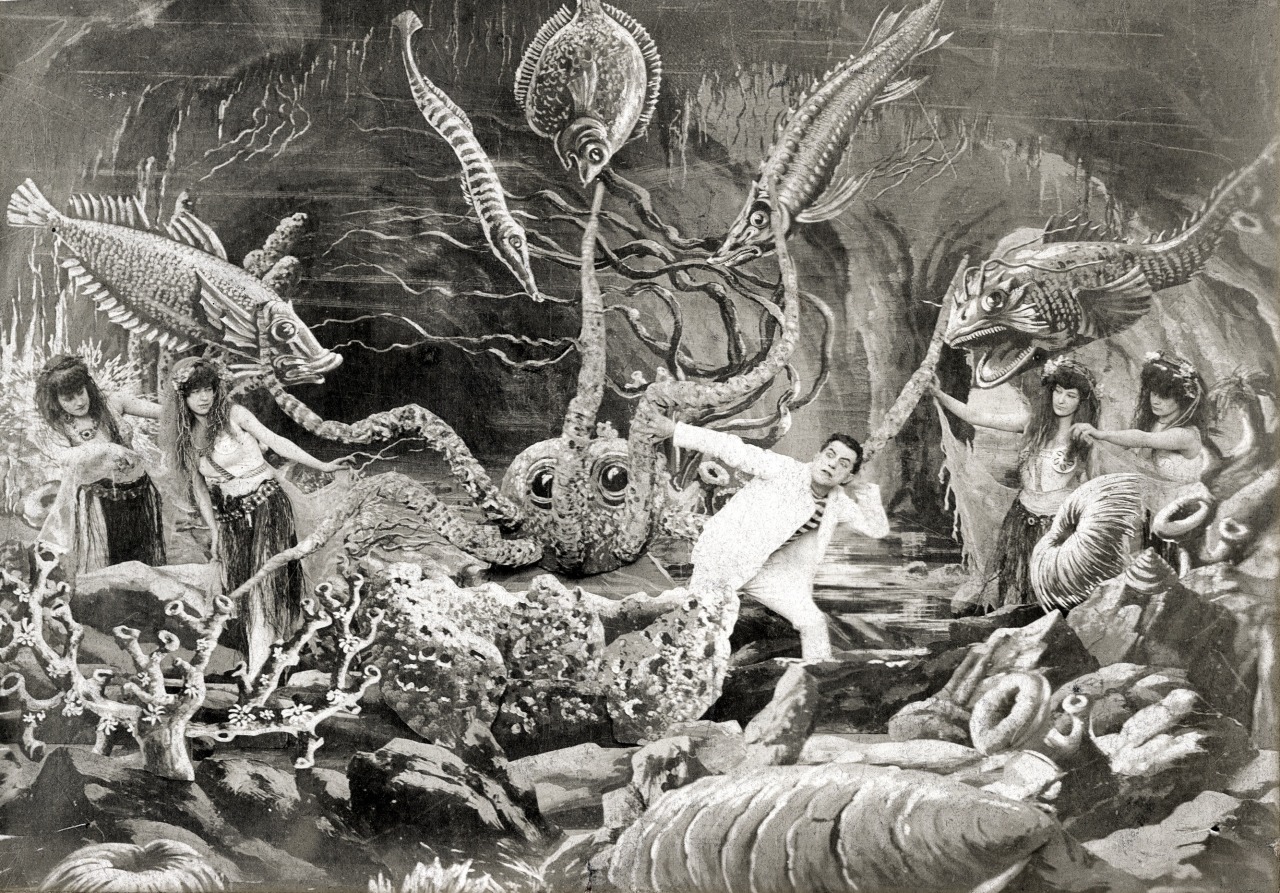
In 2016, the United States Library of Congress selected 20,000 Leagues Under the Sea as a new addition to the National Film Registry due it is historical and cultural significance. It should also be noted that the film was produced by the Universal Film Manufacturing Company, now known as Universal Pictures.
Universal Pictures has, of course, continued to produce successful science fiction films to this day.
Metropolis, 1927
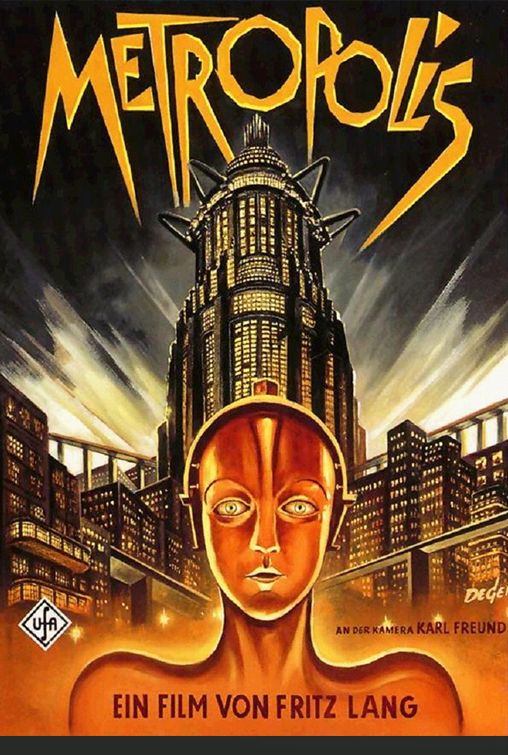
Our next film is the groundbreaking stylized visual masterwork of Director Fritz Lang titled Metropolis. In both theme and visual style, Metropolis left its mark on cinema history and influenced all other science-fiction films that followed. Written by Thea von Harbou, the film envisions a dystopian future where mistreated workers are inspired to revolt against wealthy industry barons who rule over them from vaulted towers. A robot facsimile of the workers’ leader, Maria, is used to ferment discord and provoke a volatile rebellion.
Style plays a major role in modern science fiction and the origins of a unified stylized visual approach to science fiction cinema are firmly rooted in Metropolis. Metropolis is the odd film that continues to influence not only cinema, but other art forms as well. Imagery from Metropolis continues to appear in modern music videos every few years. Queen used scenes from the film for their 1984 video to Radio Ga Ga.
Madonna borrowed imagery for Express Yourself in 1989. More recently Lady Gaga has referenced the film in videos to Alejandro, Born This Way, and Applause. Metropolis movie merchandise remains popular to this day.
T-Shirts, posters, and prints have kept the film’s imagery relevant and an enduring part of pop culture.
Metropolis has been re-released multiple times with film restoration and alternate soundtracks. Almost 100 years after its original release, the film is still commonly shown in arthouse theaters. Readers interested in viewing the film will have no difficulty finding multiple versions for streaming or sale.
Things to Come, 1936
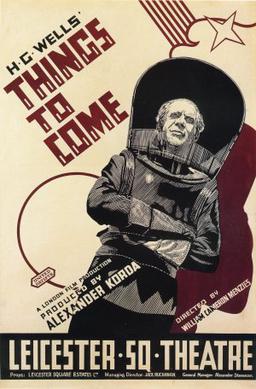
So far, we have seen contributions to science-fiction cinema from France, United States, and Germany. With Things to Come, we recognize a major contribution from the United Kingdom to the science-fiction genre. Directed by William Cameron Menzies and written by the world-famous science-fiction writer H.G. Wells, the film covers a fictional history of the world from the 1940s up to the year 2036. While the film accurately predicted near future events such as World War II, the film’s later predictions were further off the mark.
Things to Come took a different approach to science-fiction with a plot that attempted to make logical predictions of the future. While the film strives to succeed as entertainment, it deliberately avoided the elements of fantasy and satire that frequently dominated previous science-fiction films. The film took its themes seriously and cast well-known dramatic actors. This serious approach to the genre is the film’s key element of note.
While not as widely rereleased as other films on this list, the film was released on DVD in 2007 and on Blu-ray in North America in 2013.
Strange Holiday, 1945

Perhaps the least known film on this list, Strange Holiday returns to the theme of tyranny, man’s nature to submit, and man’s need to resist tyranny when it arises. Clearly influenced by the events of World War II the film follows actor Claude Rains after he returns home from a fishing holiday in the far north woods. The world he returns to is not the world he left. Rains is stunned to find everything in his city has changed. A despotic new order has been introduced, and a fascist nightmare takes over everything in his life.
Dictatorships and fanaticism are the central themes of this terrifying tale. A singular work of post-World War II science-fiction, the film puts forward the theory that the horrors of far-right extremism could happen anywhere at any time.
The Incredible Shrinking Man, 1957
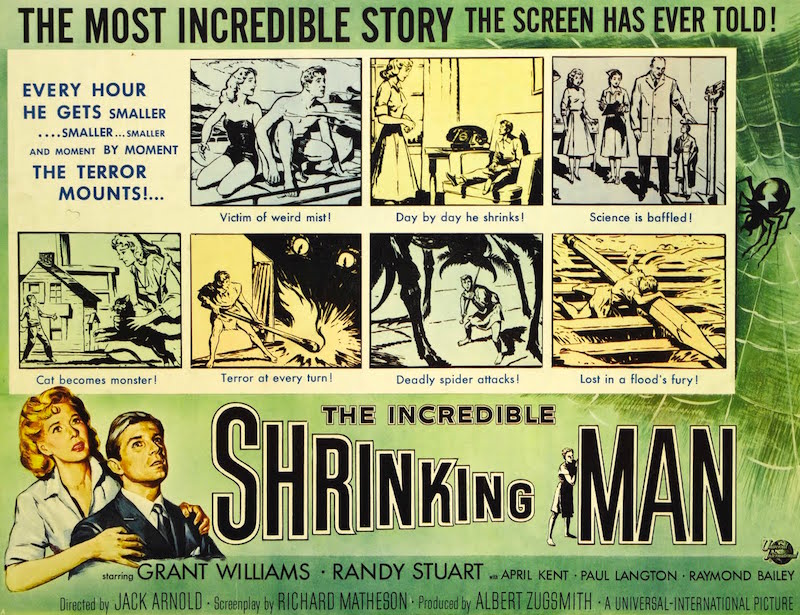
Universal Pictures adds another film to our list with The Incredible Shrinking Man. Grossing almost 1.5 million dollars in the United States and Canada alone, The Incredible Shrinking Man was one of the highest grossing films of the 1950s. The film spawned multiple sequels and remakes, and inspired successful films such as Honey I Shrunk the Kids. While the film’s special effects were a leap forward and astounded movie goers, the film’s true strength may very well be its exploration of humanity’s role in the universe.
The film offers a surprisingly philosophical and moving account of man’s confrontation with events beyond his control.
2001 A Space Odyssey, 1968

In many ways, 2001 A Space Odyssey was a culmination of everything that had come before and inspiration for everything that would come after. Director Stanley Kubrick was already developing a reputation as a perfectionist, but with 2001 he took perfectionism to degrees never seen before or since.
Kubrick’s scenes in space were so realistic that to this very day there are those that speculate that Kubrick filmed the Apollo Moon landing on a sound stage. He so accurately depicted what space would look like that when space was truly filmed it was immediately compared to his work.
As is frequently the case with the best science-fiction films, 2001 was an adaptation of a science-fiction novel. In this case, science-fiction writer Arthur C. Clarke worked directly with Kubrick to adapt his novel into a movie script.
The film brings together everything from the past, present, and future of humankind, with paranoid, despotic spaceship computers stealing scenes alongside blistering special effects and a dramatic symphonic soundtrack. It changed the shape of how science-fiction was treated on film and provides a haunting vision of space and time that goes beyond words.
2001 was released to both critical acclaim and box office success. It was the highest grossing film of 1968 in North America and was nominated for four Academy Awards and took home two. Widely considered as one of the best films of any genre of all time, it to was added to the National Film Registry of United States Library of Congress.
Alien, 1979

While the genres of science-fiction and horror have always overlapped, 1979’s Alien redefined science-fiction horror. Taking cues from the past director, Ridley Scott and writer Dan O Bannon looked for a new yet stylized look for the film.
They found the look they wanted in the art of H. R Giger. Giger’s work is gritty and organic. The clean feel of spaceships and space exploration of past films was abandoned in exchange for a cramped dirty vision of the future.
In addition to changing the look and feel of science-fiction, Alien also took a major step forward for cinema by thrusting a female character into what would have historically been a male heroic rule.
Sigourney Weaver as the fearless Ripley suggested not only that a female could be an equal to men, but also superior. Alien shook loose the established norms and showed the world something different.
Superbly marketed with the tag line ‘In Space No-one Can Hear You Scream,’ fans arrived at cinemas in droves. The film aimed at an adult audience and carried an R rating, which was a departure from most science-fiction films of years before.
Film goers left shocked and awed. Including reissues, the film has grossed an astounding $150 million dollars. While critical reaction was mixed, movie studios saw new opportunity in science-fiction horror. The face of the science-fiction landscape had changed once again.
Blade Runner, 1982
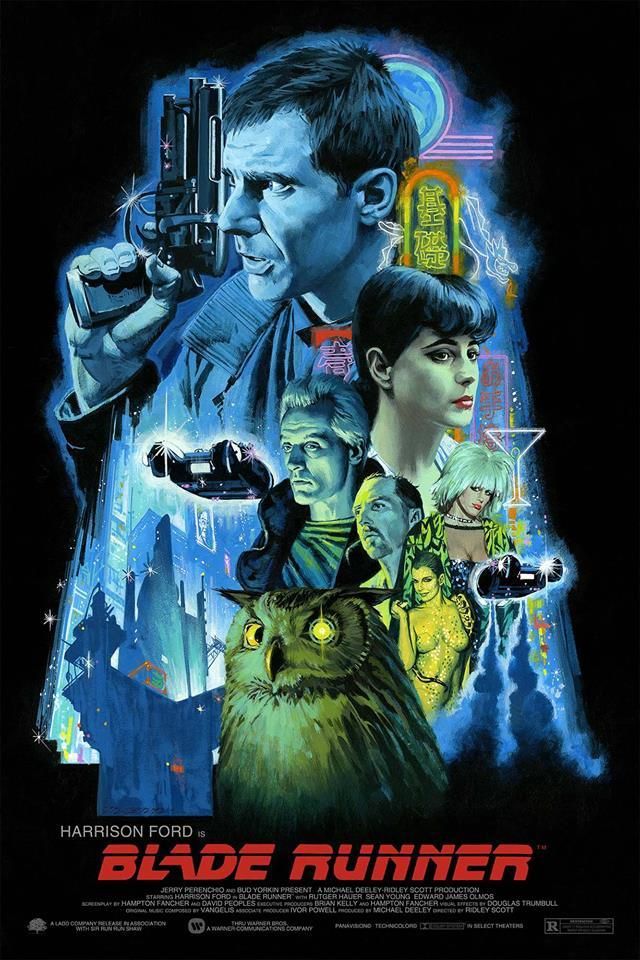
Ridley Scott returns to our list with another stunning film by the name of Blade Runner. While the film shares the grit and grim, and some theorize the universe, of Alien, it trades horror for crime fiction and philosophy. The much-loved Harrison Ford stars in the sci-fi thriller. With the neo-noir landscape of a rain-soaked LA providing much of the film’s look and image, the film has installed itself as a go-to look for harsh and uncompromising future worlds.
The Matrix, 1999

Style? Check. Thought-provoking? Check. Amazing and innovative special effects? Check.
The Matrix is a film that goes so far down the rabbit hole that Sean Connery turned down a starring role because he could not understand what was going on in the script.
While not as innovative as many of the films that have gone before it on this list, and certainly not on any lists of the best movies of all time, it is still one of the most important science fiction films of the 1990s.
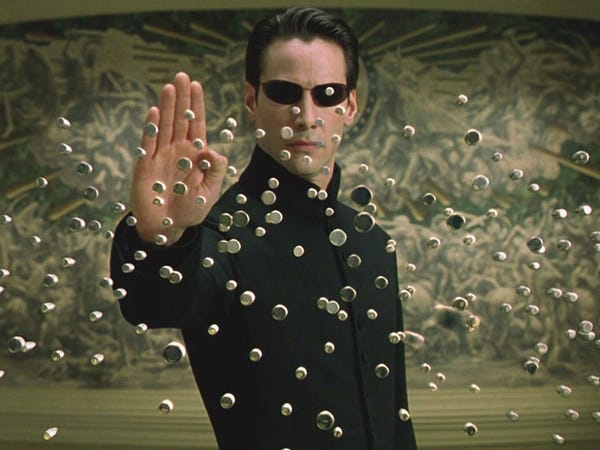
The Matrix brought a brand-new take on visual effects and its role in storytelling. By employing slow-motion and so-called ‘stop time’ techniques, the film has influenced countless action and sci-fi movies that want to highlight a type of millennial cool that stunned and surprised when first used.
The Matrix has since gained a healthy reputation as a genuine ground-breaking movie event, and one that has brought with it a lasting and unique style.
Primer, 2004

Another obscure addition to our list, but one that deserves its place, is Primer. While most of our list required huge budgets, Primer relies on ideas.
Shane Caruth, a college graduate with a degree in mathematics and a former engineer, essentially created the film by himself with only a small about of assistance from David Sullivan. With a budget of only $7,000 Caruth successfully shows that ideas are as important to science-fiction as any visual or special effects.
Primer brings the idea of conflicting realities and the problem of time travel straight into the new century. When a group of scientist friends work on a machine capable of time-travel, the problems soon mount up, leaving them desperately trying to solve problems without adding any new ones. The film brilliantly introduced the world to Caruth’s vision of a new form of cinematic intellectual sci-fi.
Arrival, 2016
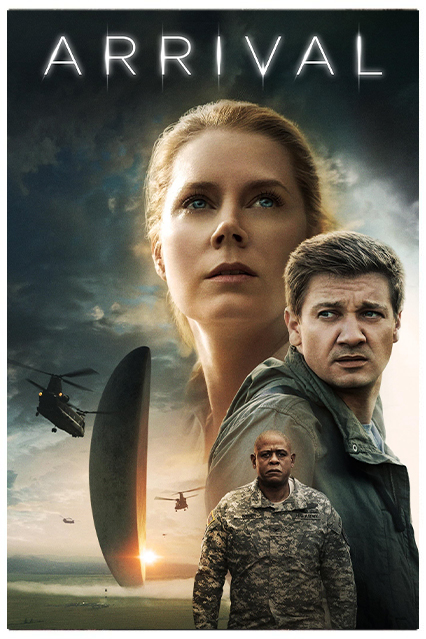
The Denis Villeneuve directed film, Arrival, is an adaptation of a Ted Chiang short story and explores the power of communication. When aliens make their presence known, a linguist is employed by the government to try and decode their signals and language.
A cerebral and thought-provoking film, it provides plenty of evidence for the existence of, if not aliens, then a sci-fi fan base keen for grown-up and literate science fiction films.
Summary
I am sure you have noticed by now that we have listed one science-fiction film from every decade. While there are dozens of other films well deserving of a place on this list, I am hoping you see something intriguing you have not previously seen. The future surely holds something new and different and until the future arrives, we can visit it on the sliver screen.

